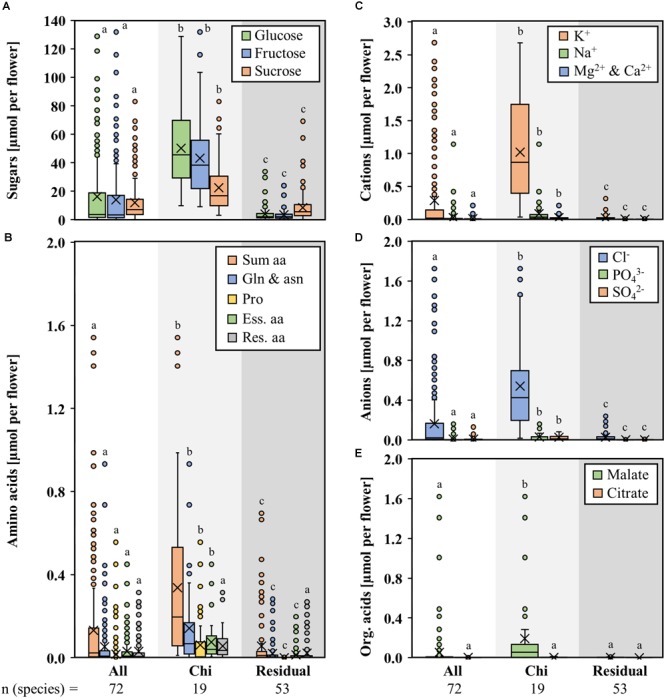FIGURE 4.

Amount of different nectar compounds per flower in seven genera with bat-pollinated species. Comparison of the nectar constituents of seven bromeliad genera (Alcantarea, Guzmania, Pitcairnia, Puya, Tillandsia, Vriesea, and Werauhia), which include bat-pollinated species as well as species with other pollination types. Boxplot diagrams illustrate the following components: sugar (A), amino acids (B), cations (C), anions (D), and organic acids (E). All amounts are given in μmol per flower. The box plots show medians (horizontal line in box) and means (× in box). Different letters represent significant differences in each sugars (glucose, fructose, sucrose), amino acids (sum amino acids, glutamine, and asparagine, proline, essential amino acids, residual amino acids), cations (potassium, sodium, magnesium, calcium), anions (chloride, phosphate, sulfate), and organic acids (malate, citrate) between the different pollination groups (Tukey’s HSD; p < 0.05).
